P.PSH.2002 - PDS - Precision soil management for pasture productivity
Variable Rate Applications is often more effective at reaching target soil critical values and tends to manage or reduce variability more than uniform applications, however generally has higher upfront costs involved.
| Project start date: | 15 January 2021 |
| Project end date: | 01 December 2024 |
| Publication date: | 21 October 2025 |
| Project status: | Completed |
| Livestock species: | Grass-fed Cattle, Sheep |
|
Download Report
|
|
Summary
Variability in soil characteristics, such as acidity and the nutrients critical to pasture growth, can be substantial within a single paddock due to the ongoing influence of soil types, management decisions, and livestock movement. Variable Rate (VR) Applications are commonly used in cropping to provide better targeting of fertiliser and ameliorants, but uptake is low in the livestock industry. This Producer Demonstration Site (PDS) aimed to assess variability in representative paddocks in east South Australia/West Victoria and measure any differences in soil, pasture, and livestock outcomes using a paired-paddocks design to compare VR and conventional practices. VR was often more effective at reaching target soil critical values and tended to manage or reduce variability more than uniform applications, but also had higher upfront costs involved. The methods used to measure pasture and livestock outcomes in this PDS were not sensitive enough to detect any differences and further work is required to quantify the longer-term costs/benefits associated with VR practices.
Objectives
The objectives of this PDS centred on assessing variability across nearly 1000 hectares (ha) of representative paddocks, supporting core producers to implement demonstrations comparing a VRA to a conventional uniform application, and measuring the soil, pasture, livestock, and economic outcomes associated with each treatment. The PDS was successful at assessing both initial soil variability and measuring the change in soil conditions but was unable to adequately assess whether there were any changes to livestock or pasture outcomes.
Key findings
Soils displayed substantial variability across all tested analytes, although the degree of variability itself varied substantially between paddocks. Variable rate applications were often more effective at reaching target soil critical values and were often also more effective at managing or reducing variability compared to conventional uniform applications, but the approach had consistently higher up-front costs due to the expense of additional sampling and higher prescribed rates. A more intensive experimental design is necessary to pick up any changes to pasture, livestock, and broader financial outcomes arising from different fertiliser and ameliorant strategies.
Benefits to industry
There is substantial soil variability that is currently under-managed in many pasture-based grazing systems. Variable rate applications can increase fertiliser efficiency and effectiveness, with the potential for pasture, livestock, and financial benefits, but these were unable to be measured using the low-intensity monitoring techniques applied in this demonstration.
MLA action
MLA continues to deliver the Producer Demonstration Site (PDS) program, supporting livestock producers working in peer-to-peer groups to pursue new skills, knowledge and management practices applicable to their own commercial livestock production systems.
Future research
The potential value of VR justifies further work aimed at effectively measuring livestock and pasture outcomes to provide a more complete base of knowledge and to support effective adoption across the industry.
More information
| Project manager: | Alana McEwan |
| Contact email: | reports@mla.com.au |
| Primary researcher: | Precision Agriculture Pty Ltd |


